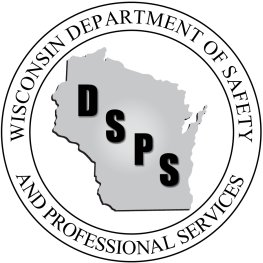DSPS Secretary-designee Dawn Crim Visits Wisconsin Mass Timber Company, Explores Environmental and Economic Impact of Updated Mass Timber Code Provisions
MADISON, Wis. – Yesterday was Earth Day. At the Department of Safety and Professional Services, that means it was time to talk trees.
This past Wednesday, DSPS Secretary-designee Dawn Crim and Assistant Deputy Secretary Dan Hereth, along with Wisconsin Economic Development Corporation Deputy Secretary Sam Rikkers and Assistant Deputy Secretary Mike Woicekowski, visited Madison’s WholeTrees Structures to learn more about commercial timber construction in Wisconsin. The group also toured Festival Foods, which features WholeTrees trusses and columns fabricated from Tenney Park ash trees culled in response to emerald ash borer infestation as well as red pine from the Wisconsin River Valley.
That may be changing.
Across the country, architects are designing multi-story wood-frame commercial buildings for sustainability-minded clients who want to embrace more natural materials and minimize their carbon footprint. From Washington to New York and even Wisconsin, high-rise “tall mass timber” buildings are joining the skylines. Milwaukee’s own Ascent, a 25-story residential tower, is on track to be the tallest mass timber building once it is complete.
The Wood Products Council, which monitors mass timber projects in development, reports that all 50 states have a mass timber building either completed or in design. Various construction industry reports also predict increasing specification of mass timber components in commercial buildings, which will likely drive demand for the products.
For states like Wisconsin, which have ample forests and an existing timber industry, this seems like great news.
But there is a catch. Wisconsin’s current commercial building code limits the use of mass timber to four-story buildings unless the architect and building owner pursue a variance, which often adds time and cost to the building schedule and plan. So while it is not impossible to build a mass timber high-rise in Wisconsin, as the Ascent proves, it is not normal, either.
The sustainability features of mass timber are what first caught the attention of DSPS Secretary-designee Dawn Crim, who learned about them during a stakeholder meeting at the University of Wisconsin-Milwaukee School of Architecture and Urban Planning outreach trip in 2019. Secretary-designee Crim and Lieutenant Governor Mandela Barnes joined UWM faculty and area industry experts to learn more about the relationship between sustainable design and building codes. Mass timber emerged as an example of a family of sustainable construction products that could become more mainstream if the commercial building code expanded allowable use.
Secretary-designee Crim has directed the CBCC to closely evaluate the possibility of fully adoption the most current IBC mass timber provisions as a way to normalize the use of the products and create a market for Wisconsin timber and Wisconsin wood products.
“This would result in jobs creation, particularly in rural parts of the state where forests, mills, and most other related manufacturing facilities are located,” Crim said. “Updating our codes would be good not only for the environment, but also for the economy.”
Wisconsin also has a real opportunity, she says, of being a national leader in the mass timber industry. Updating the building code would open the gate for more businesses to join WholeTrees in the market. “Our business works across the county, and we see greater demand in states that have adopted more current mass timber code provisions,” Harms said. “When you eliminate the need for variances, wood products become more competitive—both in terms of price and time—with concrete and steel.”
Crim says the experts on the CBCC have deep experience not only with the code but within the Wisconsin construction industry, and she trusts the council will give mass timber the attention it deserves.
“The relationship between our building code and the mass timber opportunity is clear,” said DSPS Secretary-designee Dawn Crim. “What the code allows is what becomes standard. While customers can and do pursue variances, variances are—by definition—the exception and not the rule.”
The Department of Safety and Professional Services issues more than 240 unique licenses, administers dozens of boards and councils that regulate professions, enforces state building codes, runs the state fire prevention program, and maintains the award-winning Wisconsin Enhanced Prescription Drug Monitoring Program, which is a key tool in the multi-faceted public health campaign to stem excessive opioid prescribing. A fee-based agency, the Department of Safety and Professional Services is self-sustaining and receives no general fund tax dollars for its day-to-day operations. With five offices and 250 employees throughout Wisconsin, DSPS collaborates with constituents and stakeholders across a wide range of industries to promote safety and advance the economy.
NOTE: This press release was submitted to Urban Milwaukee and was not written by an Urban Milwaukee writer. While it is believed to be reliable, Urban Milwaukee does not guarantee its accuracy or completeness.
Mentioned in This Press Release
Recent Press Releases by Wisconsin Department of Safety and Professional Services
Wisconsin DSPS Recognized for Innovation
Nov 26th, 2025 by Wisconsin Department of Safety and Professional ServicesAgency's digital license offering earns prestigious award
Wisconsin DSPS Digital License Earns Another Award
Oct 21st, 2025 by Wisconsin Department of Safety and Professional ServicesAgency leaders to be honored for their latest innovation next month





















